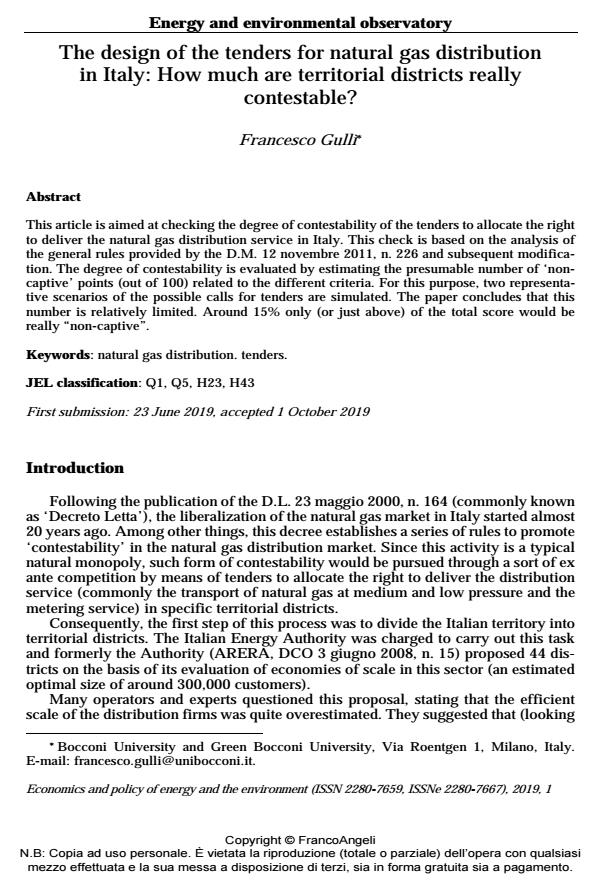The design of the tenders for natural gas distribution in Italy: How much are territorial districts really contestable?
Journal title ECONOMICS AND POLICY OF ENERGY AND THE ENVIRONMENT
Author/s Francesco Gullì
Publishing Year 2019 Issue 2019/1
Language English Pages 25 P. 5-29 File size 195 KB
DOI 10.3280/EFE2019-001001
DOI is like a bar code for intellectual property: to have more infomation
click here
Below, you can see the article first page
If you want to buy this article in PDF format, you can do it, following the instructions to buy download credits

FrancoAngeli is member of Publishers International Linking Association, Inc (PILA), a not-for-profit association which run the CrossRef service enabling links to and from online scholarly content.
This article is aimed at checking the degree of contestability of the tenders to allocate the right to deliver the natural gas distribution service in Italy. This check is based on the analysis of the general rules provided by the D.M. 12 novembre 2011, n. 226 and subsequent modification. The degree of contestability is evaluated by estimating the presumable number of ‘noncaptive’ points (out of 100) related to the different criteria. For this purpose, two representative scenarios of the possible calls for tenders are simulated. The paper concludes that this number is relatively limited. Around 15% only (or just above) of the total score would be really "non-captive".
Keywords: Natural gas distribution. tenders.
Jel codes: Q1, Q5, H23, H43
Francesco Gullì, The design of the tenders for natural gas distribution in Italy: How much are territorial districts really contestable? in "ECONOMICS AND POLICY OF ENERGY AND THE ENVIRONMENT" 1/2019, pp 5-29, DOI: 10.3280/EFE2019-001001